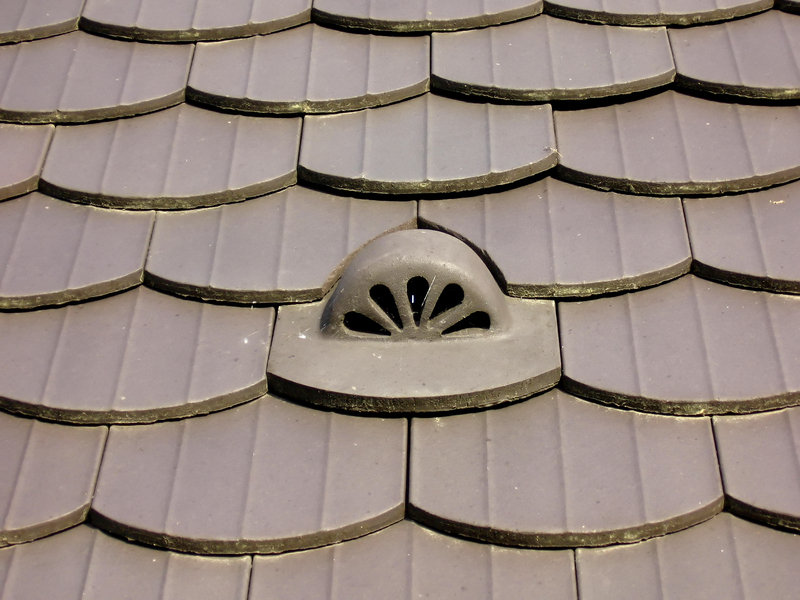Innovative Solutions for Removing Burnt-on Residue from Stovetops
Posted on 24/06/2025
Innovative Solutions for Removing Burnt-on Residue from Stovetops
Struggling with burnt food stuck to your stovetop? Many home cooks know the frustration of cleaning up after a delicious meal only to discover stubborn, charred residue clinging to their stovetop. While traditional cleaning methods may sometimes fall short, there has been a surge in innovative solutions and clever techniques specifically designed to remove burnt-on residue from stovetops efficiently and safely.

Understanding Burnt-on Stovetop Residue: Why Is It So Difficult to Clean?
Before diving into the latest and most effective residue removal methods, it helps to understand why burnt-on messes are so persistent. When food and liquids are accidentally spilled onto a hot stovetop surface, a process called carbonization occurs. Sugars, fats, and proteins break down and bond tightly to the stovetop's surface, whether it's glass, ceramic, or stainless steel. The result? Hardened, blackened patches that are tough to remove without the right tools or products.
The Risks of Incorrect Cleaning Methods
It's tempting to grab a metal scraper or strong chemical cleaner for a quick fix. However, improper methods can cause:
- Scratches on glass or ceramic stovetops
- Damage to seals or heating elements
- Chemical residues that are unsafe for food contact
- Potential discoloration and permanent marks
Cutting-edge Cleaning Products for Burnt-on Residue Removal
1. Plant-Based Enzymatic Cleaners
A game-changer in stovetop cleaning, enzymatic formulas harness plant-derived enzymes to break down organic matter like burnt food. Unlike harsh chemicals, these eco-friendly cleaners are gentle yet highly effective on stubborn grime, making them ideal for:
- Glass stovetops
- Ceramic cooktops
- Electric burners and induction surfaces
2. Steam Cleaning Devices
Recent years have seen a boom in affordable, compact steam cleaners specifically designed for kitchen appliances. High-temperature steam loosens burnt-on food and grease without chemicals or scrubbing. The powerful vapour penetrates carbonized residue, making it easy to wipe away with a microfiber cloth. Advantages include:
- Safe on all stovetop materials
- No chemical odor or residue
- Reduces the need for scraping
- Kills bacteria as it cleans
3. Gel-Based Stovetop Cleaners
Another innovative cleaning agent is the gel-based formula. These thick gels adhere to angled or vertical surfaces, allowing for longer dwell times on burnt patches. They often contain micro-abrasives that gently lift carbonized spots without scratching.
- Apply the gel to affected areas
- Wait for the recommended period (usually 5-10 minutes)
- Wipe off with a soft cloth or sponge
Unique DIY Techniques for Burnt-on Residue Removal
Apart from commercial products, there are creative, home-based solutions that harness common household items in new and surprising ways. Here are some science-backed and lesser-known DIY approaches:
1. Baking Soda and Hydrogen Peroxide Paste
Combine baking soda with a small amount of hydrogen peroxide to form a thick paste. Spread it over the burnt residue and let it sit for 15-30 minutes for a fizzing, lifting action. *The paste reacts with carbon deposits, breaking them down for easy wipe-off.*
- Safe for most surfaces
- Non-toxic and budget-friendly
- Excellent for cleaning enamel and stainless steel
2. Vinegar and Lemon Steam Method
Create a fragrant, natural cleaning steam by combining equal parts white vinegar and water, plus a few lemon slices, in a pot. Bring to a boil and allow the steam to circulate over the stovetop (with ventilation). *The acetic acid in vinegar loosens burnt residue while lemon deodorizes and cuts grease.*
- No harsh chemicals
- Great for refreshing the kitchen
3. The Plastic Razor Blade Scraper Trick
For glass or ceramic stovetops, a plastic razor blade scraper gently lifts burnt bits without scratching. Used alongside a safe cleaning spray or paste, it's a precise tool for those tricky, stuck-on patches. Remember to always use a shallow angle and avoid metal blades unless specified safe by your stovetop's manufacturer.
Professional Innovations: Nano-Coating and Non-stick Solutions
If you want to prevent future build-up and simplify clean-ups, there are new protective technologies you should know about:
1. Nano-Coating Sprays
These cutting-edge sprays use nano-sized ceramic particles to form a near-invisible layer on your stovetop. The result? Residue wipes away easily and is less likely to burn on in the first place. Nano-coating offers:
- Lasting protection (up to 6 months)
- Compatible with glass, ceramic, and some metals
- Makes future residue removal much easier
2. Removable Non-stick Burner Covers
Recently, manufacturers have designed custom-fitted, heat-resistant burner covers with non-stick coatings. These covers:
- Catch spills before they reach the stovetop
- Remove easily for fast cleaning
- Are dishwasher safe and reusable
Step-by-Step Guide: How to Remove Burnt-on Residue from Any Stovetop
Ready to tackle that burnt mess? Here's a comprehensive, step-by-step process using the most effective solutions mentioned above.
Step 1: Assess Your Stovetop Material
- Is it glass, ceramic, enamel, or stainless steel?
- Check the manufacturer's care instructions
- Select products safe for your surface
Step 2: Remove Loose Debris
- Wait for the surface to fully cool
- Use a soft brush or cloth to wipe away food and crumbs
Step 3: Apply an Innovative Cleaning Solution
- For most surfaces: Use a plant-based enzymatic cleaner, gel, or DIY paste (as described above).
- For glass/ceramic: Consider plastic razor scraper + gel cleaner.
- For heavy carbonization: Steam clean for at least 5 minutes.
Step 4: Allow Dwell Time
- Give your chosen solution time to work (10-30 minutes, longer for tough burns)
Step 5: Gently Scrub or Scrape
- Use a non-abrasive sponge, microfiber cloth, or plastic scraper
- Never use steel wool on glass or ceramic
Step 6: Wipe Clean and Polish
- Remove all residue with a damp cloth
- Buff to a shine with a dry microfiber towel
Step 7: Apply Protective Solution (Optional)
- Spray nano-coating for easy future cleaning
- Install non-stick burner covers as desired
Tips for Preventing Burnt-on Residue on Stovetops
While innovative cleaning methods are essential, prevention is just as important. Use these expert tips:
- Wipe spills promptly: Clean up food or liquid spills as soon as the surface cools.
- Install removable covers or liners on burners/pan supports.
- Use pans and pots with flat, clean bottoms to reduce overflows and hotspots.
- Apply a protective, food-safe polish or nano-coating for ongoing resistance to burning and stains.
Frequently Asked Questions about Removing Burnt-on Stovetop Residue
Can I use metal scrapers or knives on my stovetop?
No. Using metal can scratch glass or ceramic and is not recommended unless specified safe by your appliance manufacturer. Opt for plastic blades or specialized stovetop scrapers.
Are baking soda and vinegar safe for all cooktops?
Mostly, yes. However, always check your cooktop manual, as excessive use of acidic or abrasive formulas can damage some surfaces over time.
How often should I deep clean my stovetop?
For optimal performance, deep clean once a week using innovative, non-abrasive cleaners--especially after any major spill or burnt-on incident.
Is steam cleaning safe for all stovetops?
Steam is generally safe but avoid direct, concentrated steam blasts on electric elements or controls. Always let the stovetop cool before cleaning.

Top Ten Innovative Products for Stovetop Residue Removal
- Ecos Enzyme-Based Cooktop Cleaner
- Affresh Cooktop Cleaning Pads
- Limpi Glass & Ceramic Scour Pads
- Bar Keepers Friend Cooktop Cleaning Kit
- Steamfast SF-210 Handheld Steam Cleaner
- Weiman Stovetop Cleaner & Polish Gel
- Mr. Siga Microfiber Cleaning Cloths
- Glisten Cooktop & Oven Cleaner
- Scotch-Brite Cooktop Rejuvenator
- Magic Nano-Coating Spray for Appliances
*Always confirm compatibility with your stovetop before use.*
Conclusion: The Future of Effortless Stovetop Cleaning
Gone are the days when burnt-on residue meant hours of backbreaking scrubbing or risk of lasting stovetop damage. Thanks to advances in cleaning science and a desire for *kitchen-friendly, food-safe solutions*, you now have a vast array of innovative ways for removing burnt-on messes from stovetops--plus tools to help you prevent them in the first place. Whether you stick with DIY science or embrace new tech, your culinary workspace can stay sparkling clean and ready for inspiration.
Your next step? Choose a solution from this comprehensive guide and see for yourself just how easy, safe, and effective innovative stovetop cleaning can be!








